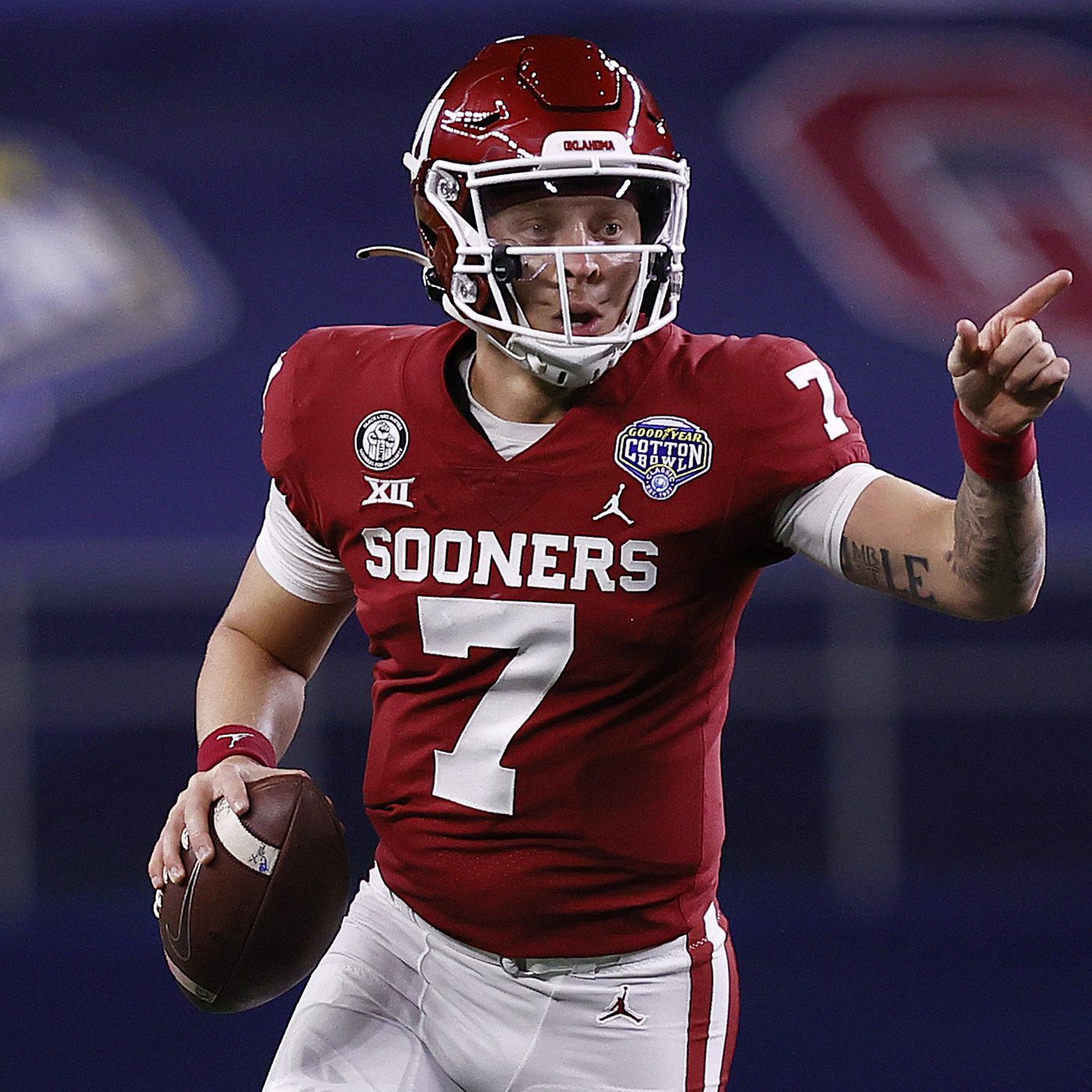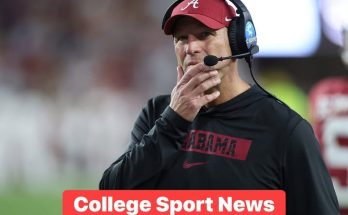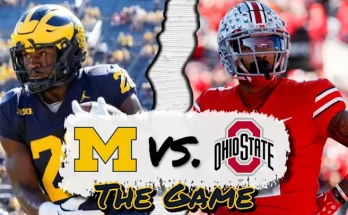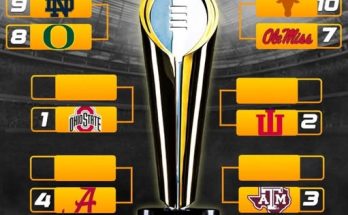Oklahoma Sooners’ John Mateer: The Next Big Thing in 2025 | Brent Venables’ Tenure Disappointing?
As the 2025 NFL Draft approaches, one name is increasingly generating buzz around the Oklahoma Sooners’ football program: John Mateer. Mateer, a standout quarterback for the Sooners, has become the focal point of hope for Oklahoma’s continued success in sending players to the NFL. However, while Mateer’s rise is exciting for the program, it also raises questions about the overall direction of Oklahoma football under head coach Brent Venables. Is Mateer truly the next big thing, or is his emergence a rare bright spot in an otherwise disappointing era under Venables?
John Mateer: Oklahoma’s Quarterback of the Future
John Mateer entered Oklahoma as a highly regarded recruit and has shown flashes of brilliance throughout his career. By 2025, he has solidified himself as the Sooners’ most promising NFL Draft prospect, especially given the program’s lack of other standout candidates. At 6’4” and 220 pounds, Mateer possesses a prototypical NFL quarterback’s frame. His arm strength, mobility, and leadership on the field have made him a player to watch in the upcoming draft.
During his time at Oklahoma, Mateer has demonstrated impressive accuracy, including being able to make all the necessary throws at the college level. What stands out most about his development is his poise under pressure. Mateer’s growth has been noticeable, especially in clutch moments, and his ability to read defenses has made him a dangerous weapon.
In his final season, Mateer put up impressive numbers, showing a marked improvement in his decision-making and consistency. With an arm capable of stretching defenses vertically and the ability to move within the pocket, he has the traits that NFL scouts covet in a top-tier quarterback. If he continues his upward trajectory, Mateer will be one of the top quarterback prospects in the 2025 NFL Draft, with many projecting him as a potential first-round pick.
However, while Mateer’s future looks bright, his success as a draft prospect also highlights a larger trend within the Oklahoma football program: the scarcity of other Sooners players at the 2025 NFL Scouting Combine.
Brent Venables’ Tenure: A Disappointing Turn?
Brent Venables’ arrival at Oklahoma in 2022 was initially met with high expectations. Venables, a defensive mastermind known for his work as the defensive coordinator at Clemson, was hired to help restore the Sooners’ defensive dominance and return the program to championship contention. Venables had a reputation for developing elite players, especially on defense, and was supposed to usher in a new era of Oklahoma football that would be more well-rounded than the high-powered offense-centric teams of the Lincoln Riley era.
However, as we approach 2025, there’s growing frustration among fans, analysts, and even some players with Venables’ tenure. While he’s brought some defensive improvements to the team, they’ve often been overshadowed by struggles on offense, particularly in the post-Riley era. Many of the Sooners’ best recruits, including highly touted quarterbacks and skill position players, have not developed into consistent NFL-caliber talents.
The 2025 draft is set to be a disappointing one for Oklahoma in terms of NFL Combine representation, as only a handful of Sooners players have been invited. This is a far cry from the past, when Oklahoma regularly sent multiple players to the Combine each year. While Mateer is undoubtedly a talent, he is seemingly the exception rather than the rule. The lack of depth in NFL talent from Oklahoma speaks to potential issues with player development under Venables’ regime.
Additionally, the Sooners’ overall performance on the field under Venables has been inconsistent, particularly in key games. After a solid start to his tenure, Venables’ teams have often faltered against high-quality opponents. The defensive improvements he promised have not been as dramatic as expected, and the offense has at times struggled to find its rhythm. This imbalance has led to questions about Venables’ ability to develop a truly elite, complete football team.
While it’s important to give any coach time to implement their vision, especially when taking over from a coach as successful as Lincoln Riley, there’s growing concern that Venables’ tenure is not progressing as quickly as many had hoped. Recruiting has remained strong, but the development of those players into NFL-caliber athletes has not yet materialized as expected.
The Disconnect Between Recruiting and Development
One of the key issues surrounding Venables’ time at Oklahoma is the apparent disconnect between recruiting success and player development. Oklahoma has continued to bring in top-tier recruits, including highly rated defensive players, but the program’s ability to develop those players into NFL-caliber prospects has been called into question. In the past, the Sooners were known for producing a steady stream of players who excelled in both college and the professional ranks. Under Venables, the development of top prospects has not been as pronounced, which may be contributing to the lack of players heading to the NFL Combine in 2025.
Take, for example, Oklahoma’s 2025 defensive class. While some highly touted recruits have entered the program, only a few have shown the level of play that is expected to translate to the next level. Whether it’s issues with scheme, player development, or simply not maximizing the talent on the roster, the Sooners have been unable to produce the type of standout defenders that once defined the program. Players like defensive tackle Jalen Redmond, linebacker David Ugwoegbu, and cornerback Woodi Washington were all highly recruited but have yet to become surefire NFL prospects. Their performances at Oklahoma have not been enough to generate widespread buzz in the same way that players under Bob Stoops or Lincoln Riley did.
Evaluating Venables’ Impact on Recruiting
Recruiting success is something Venables has not struggled with. His staff has continued to bring in blue-chip talent year after year, making Oklahoma a regular presence in top recruiting classes. However, recruiting alone does not guarantee success, especially when it comes to the NFL Draft. Development, coaching, and culture all play critical roles in turning a high school star into a professional football player.
In Venables’ case, the high school talent is certainly there, but the development has not yet matched the hype. One of the most telling examples of this issue is the lack of major contributors to the 2025 NFL Draft pool. Oklahoma’s 2022 and 2023 recruiting classes, for example, have yet to produce the type of NFL-caliber players that one would expect from a program with such a prestigious history. Venables has been slow to maximize the talent at his disposal, and this has put pressure on the entire program.
What Needs to Change?
In order for Venables to prove that he is the right man for the job, the Sooners will need to take a few critical steps. First and foremost, Oklahoma needs to produce a higher number of NFL Draft prospects, especially in the 2025 class. This will be an important indicator of whether Venables’ development strategies are working.
Improving the offensive and defensive balance of the team is another area that requires focus. Venables has demonstrated some success on the defensive side of the ball, but the offense has not been able to consistently perform at the level of elite teams. If Oklahoma can find a way to get both sides of the ball firing on all cylinders, they will be more likely to see sustained success in recruiting, player development, and ultimately the NFL Draft.
Finally, Venables must find a way to instill confidence in both his players and the Oklahoma fanbase. A strong and consistent program culture is key to turning a successful recruiting class into a team that can win championships and send players to the NFL. If Venables can do this, he may be able to reverse the disappointing trajectory of the program and return Oklahoma to its rightful place among the elite.



